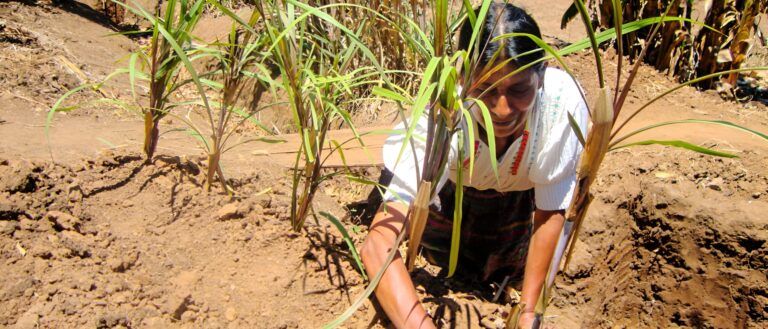Blog do IFZ | 29/10/2025
Dados e estatísticas oportunos, precisos e de alta qualidade são a base para a formulação de políticas públicas sólidas, nas quais as decisões se fundamentam em evidências concretas e o monitoramento e a avaliação dependem de sistemas estatísticos robustos. Essa necessidade tornou-se ainda mais evidente à medida que governos em todo o mundo se comprometem com amplos planos de desenvolvimento setoriais e nacionais, bem como com agendas de desenvolvimento regionais e globais.
O trabalho estatístico está no centro das atividades e do mandato da Organização das Nações Unidas para a Alimentação e a Agricultura (FAO) desde sua fundação, em 1945. A Organização apoia seus Estados-membros na eliminação da fome, na melhoria da nutrição, na erradicação da pobreza rural e na promoção de sistemas agroalimentares inclusivos e eficientes. A FAO é uma das principais fontes de dados internacionalmente comparáveis sobre alimentação, nutrição e agricultura, coletados junto a institutos nacionais de estatística e a uma ampla rede de agências parceiras, e harmonizados para oferecer uma visão global. Todos esses dados estão reunidos neste Anuário Estatístico.
O Anuário Estatístico 2023 (FAO World Food and Agriculture Statistical Yearbook 2023) é uma ferramenta essencial e uma referência indispensável para formuladores de políticas, pesquisadores, analistas e para o público em geral interessado no passado, presente e futuro da alimentação e da agricultura. Com base na ampla gama de informações produzidas pelos estatísticos da FAO em toda a Organização, esta publicação apresenta uma síntese dos principais fatores que compõem o panorama global da alimentação e da agricultura. As estatísticas são organizadas em quatro capítulos temáticos, que abordam: a importância econômica das atividades agrícolas; insumos, produtos e fatores de produção; as implicações para a segurança alimentar e nutricional; e os impactos da agricultura sobre o meio ambiente.
Nesta edição, destaca-se o tema do impacto dos desastres na agricultura, com novas informações da FAO que quantificam a magnitude das perdas resultantes desses eventos. O trabalho da FAO na estimativa das perdas de alimentos — que faz uso de fontes de dados não convencionais — também ganha destaque. Além disso, são apresentados os dados sobre o custo e a acessibilidade de uma dieta saudável, recentemente divulgados na plataforma FAOSTAT, que oferecem uma medida do acesso econômico a alimentos nutritivos e dietas equilibradas — elo fundamental entre segurança alimentar e nutrição. Por fim, esta edição do Anuário traz informações sobre as características estruturais do setor agrícola, com base em censos agrícolas, permitindo pela primeira vez a comparação entre países e diferentes rodadas de censos.
Este Anuário Estatístico 2023 é apenas uma das várias ferramentas e publicações estatísticas que a FAO disponibiliza aos usuários. A plataforma de dados FAOSTAT, de acesso gratuito, abriga a maior base de dados estatísticos do mundo sobre alimentação e agricultura, com cerca de 20 mil indicadores que abrangem mais de 245 países e territórios e registram aproximadamente 2 milhões de visualizações por ano. O Livro de Bolso Estatístico da FAO, publicação mais concisa, complementa o Anuário ao oferecer uma referência rápida e prática com os principais dados e tendências sobre alimentação e agricultura.
Além de compilar e divulgar informações, a FAO também atua no fortalecimento da capacidade estatística dos países, apoiando-os na produção de dados mais completos e de melhor qualidade, na definição de padrões e metodologias e no aproveitamento das inovações em big data. A FAO reafirma seu compromisso de garantir acesso livre a dados atualizados, confiáveis, oportunos e precisos — fundamentais para construir sistemas agroalimentares mais sustentáveis e equitativos e para alcançar um mundo livre da fome.
José Rosero Moncayo
Diretor, Divisão de Estatística
Baixe aqui o Anuário Estatístico “FAO World Food and Agriculture Statistical Yearbook 2023“
Consulte online https://openknowledge.fao.org/server/api/core/bitstreams/28cfd24e-81a9-4ebc-b2b5-4095fe5b1dab/content/cc8166en.html
Link permanente: https://openknowledge.fao.org/handle/20.500.14283/cc8166en
Veja também o FAO World Food and Agriculture Statistical Yearbook 2022


